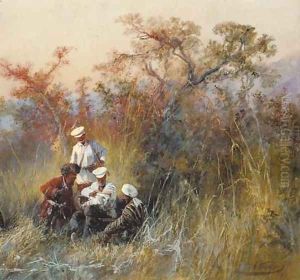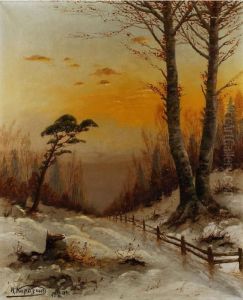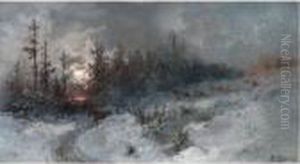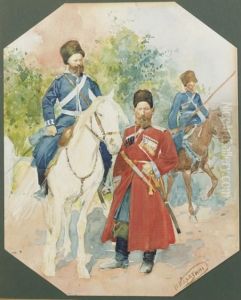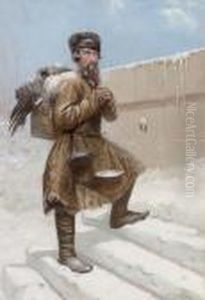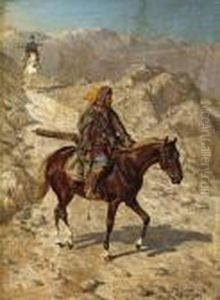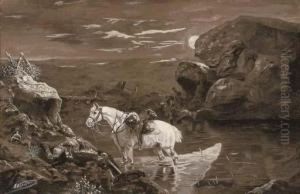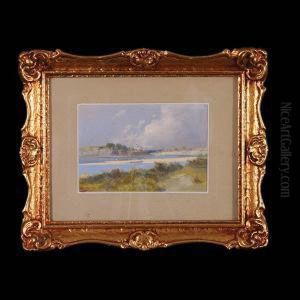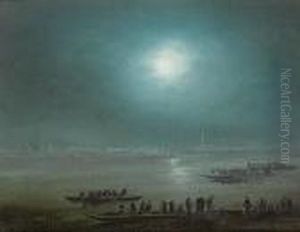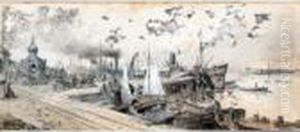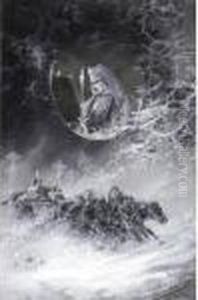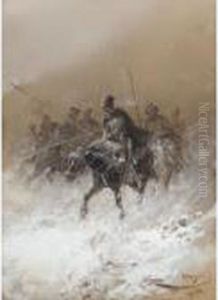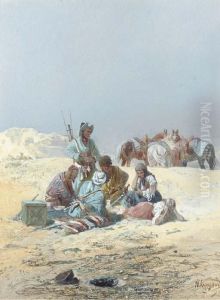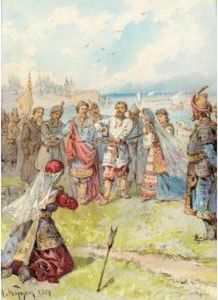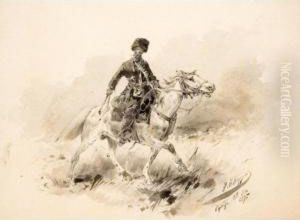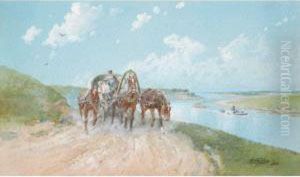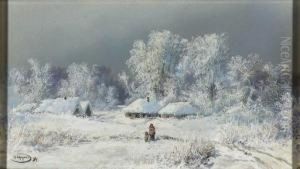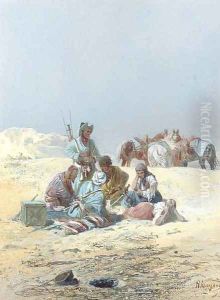Nikolai Nikolaevich Karazin Paintings
Nikolai Nikolaevich Karazin was a Russian painter, writer, illustrator, and ethnographer, known for his works that often depicted exotic locales, military scenes, and historical events. Born on November 26, 1842, in the Kharkov Governorate of the Russian Empire (now Ukraine), Karazin belonged to a noble family with a military background. His artistic talent emerged early, and he was encouraged to pursue his interests in art and travel.
Karazin attended the Saint Petersburg Academy of Arts, where he received a traditional academic art education. His passion for travel and adventure took him to distant parts of the Russian Empire and beyond, including Central Asia and the Far East. These journeys provided a wealth of inspiration for his artistic work and his writing, as he often documented his experiences through both mediums.
Throughout his career, Karazin contributed to the popularization of Orientalism in Russian art, which was a trend that romanticized and depicted the cultures of the East. As an illustrator, he worked for various periodicals, where his drawings and sketches accompanied travel notes and stories, both his own and those of other authors. His illustrations were known for their vividness and attention to detail, bringing to life the diverse cultures and landscapes he encountered.
Karazin also had a keen interest in military subjects, likely influenced by his family's military history. He participated in several military campaigns, including the Russo-Turkish War (1877–1878), and these experiences informed his battlefield paintings and sketches. His works in this genre were praised for their realism and ability to capture the intensity of military life.
In addition to his painting and illustration, Karazin was a prolific writer. He authored numerous articles, essays, and novels, many of which were inspired by his travels. His written works often featured themes of adventure and exploration, and they contributed to his reputation as a knowledgeable and engaging storyteller.
Nikolai Nikolaevich Karazin died on December 19, 1908, in Saint Petersburg. His legacy includes a rich body of artwork and literature that provides insight into the regions he explored and the events he witnessed. He remains a significant figure in Russian art history, particularly for his contributions to the genres of Orientalism and military art.
